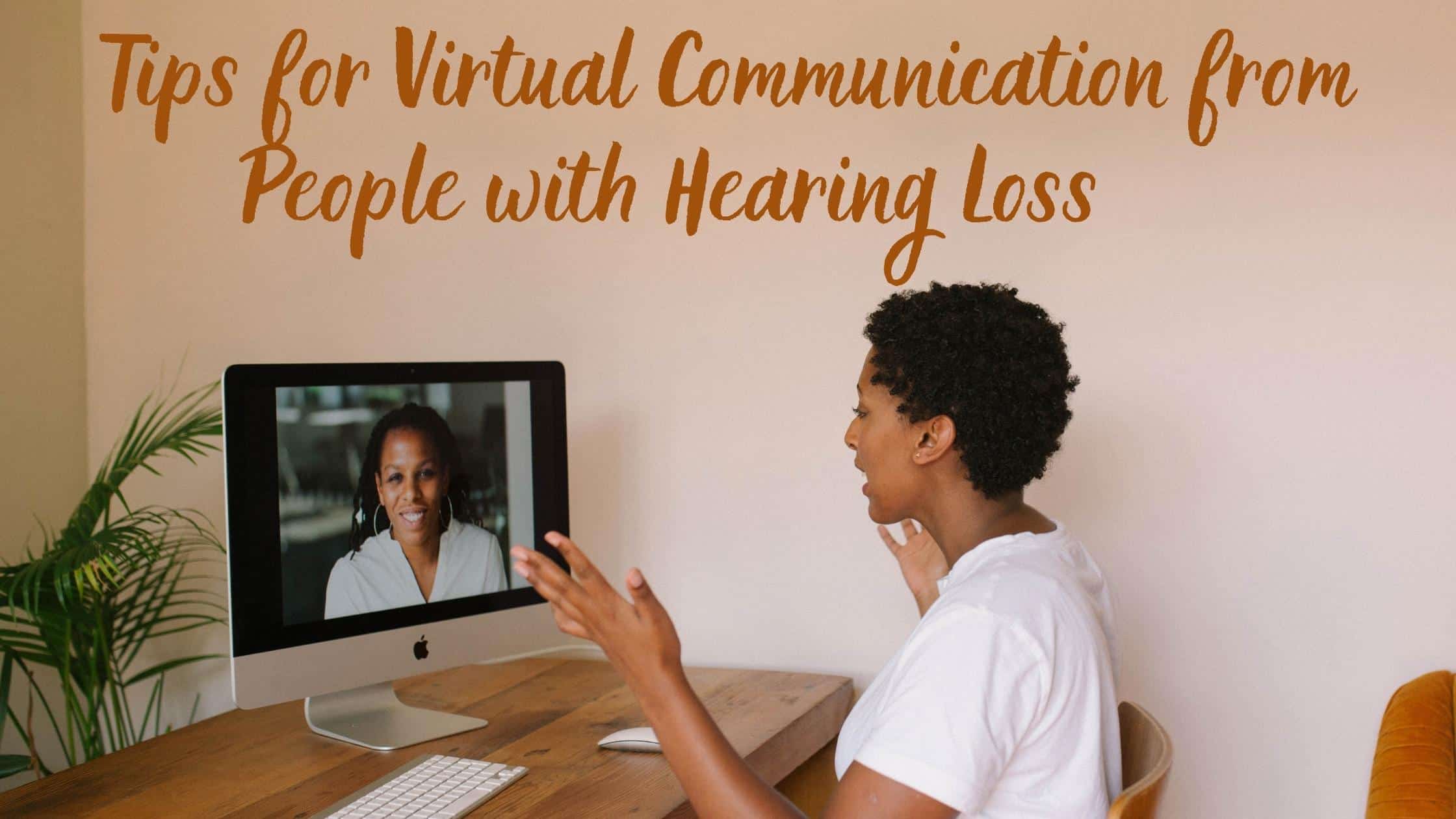
Virtual communication has been becoming more and more popular over the years. The arrival of the COVID-19 pandemic in 2020 increased the use of virtual technology, making it into a standard of many workplaces, educational environments and even family gatherings. The beauty of normalizing these tools is that it makes meetings more accessible to people regardless of location. For those with limited mobility It has allowed people to attend work, school and doctors’ visits without the hassle of navigating transportation. However, for people with hearing loss, video conferencing can present a whole new set of challenges.
“Zoom Fatigue”
A full eight hour day of work on a group video chat can be incredibly exhausting in a way that for many, in person meetings did not. Many people report feeling drained instead of invigorated. This has been coined “Zoom fatigue” after one of the most popular of video conferencing apps and is a very real sensation. One reason that video conferencing can be so exhausting is that it cuts down on our mobility. Many people during the pandemic did not have the options to leave their home or even conference at another location. Exercise is key to keeping up energy levels so it is important to program that into your daily schedule.
Another factor could be that video conferences require a higher cognitive load. In real time meetings, participants can rely on nonverbal cues such as body language. In video chats, we have to work harder to send and receive signals. Many tips which can make communication easier in video conferences come from hearing impaired people who have had to discover accommodations to help them hear with limited visual cues.
Make Sure to Pause
Keep in mind that it may take people longer for people to hear what you’ve said. If you want people to be able to follow what you are saying, make sure to take pauses when you speak. For people with hearing issues, this can give people time to fully hear what you have said before you move on. For others on the call without hearing loss, these pauses are just as helpful. Pauses allow people the chance to process what they’ve heard and take notes. It also creates a space for people to respond, without speaking over one another. Pay attention to the other members in the group. Read their eyes and facial expressions. If they seem confused or seem to be losing focus, a pause in speaking can give them time to refocus.
Take Advantage of the Digital Format
One of the greatest benefits of meeting virtually is that there are so many apps which can enhance communication. For people with a hearing disability there are apps which turn text to talk in real time, so they can read what they might not hear. Live captioning also makes transcripts of meetings more accessible for everyone, but particularly for those with hearing issues. It also offers people a moment to listen to the meeting through headphones or for some hearing aid users, to stream the audio directly into the ears. This can cancel out distracting sounds and background noise which could interfere with maintaining attention.
Maximizing Visual Cues
The good thing about video conferencing is that while it is not perfect, it still allows visual cues which aid in communication. You can still read lips, see some hand gestures and read body language, at least from the shoulders up. Encourage people to move the camera out so people can rely on more body language. The bigger you can see the speaker the better. Many video conferencing apps make the person speaking the largest window, so you can take advantage of these visual aids in communication. It is helpful for those with hearing loss to inform participants ahead of time that it is best to make sure you are well lit so other members can read your lips and facial expression.
Utilize the Chat Feature
Most video conferencing apps have a chat feature which allows you to ask questions or make comments. Encourage meeting participants to ask questions about things they might not have heard or understood. This allows you to identify and go back over items that may have been missed by some the first time, without having to speak over the person talking. Taking advantage of the communication styles utilized by people with hearing issues can make sure that every person in the group feels included and can stay engaged.
